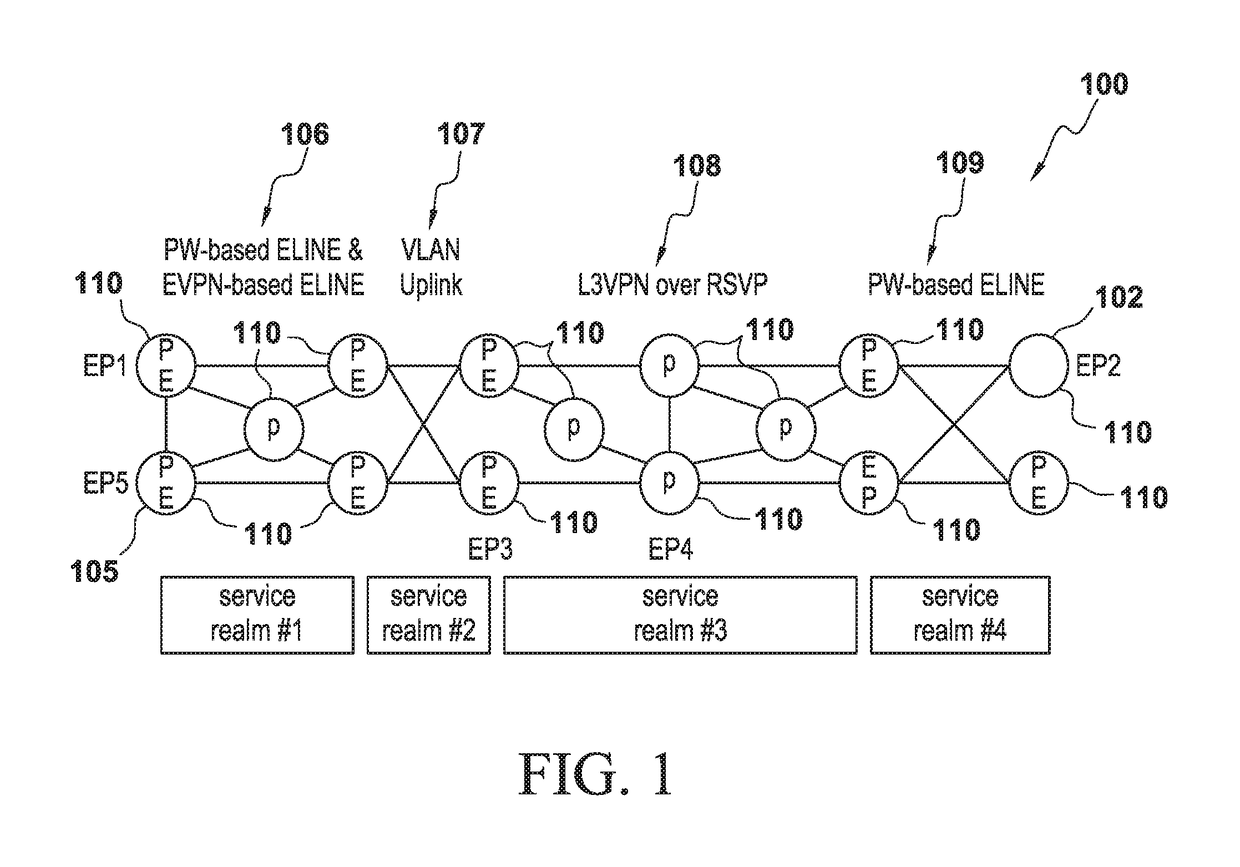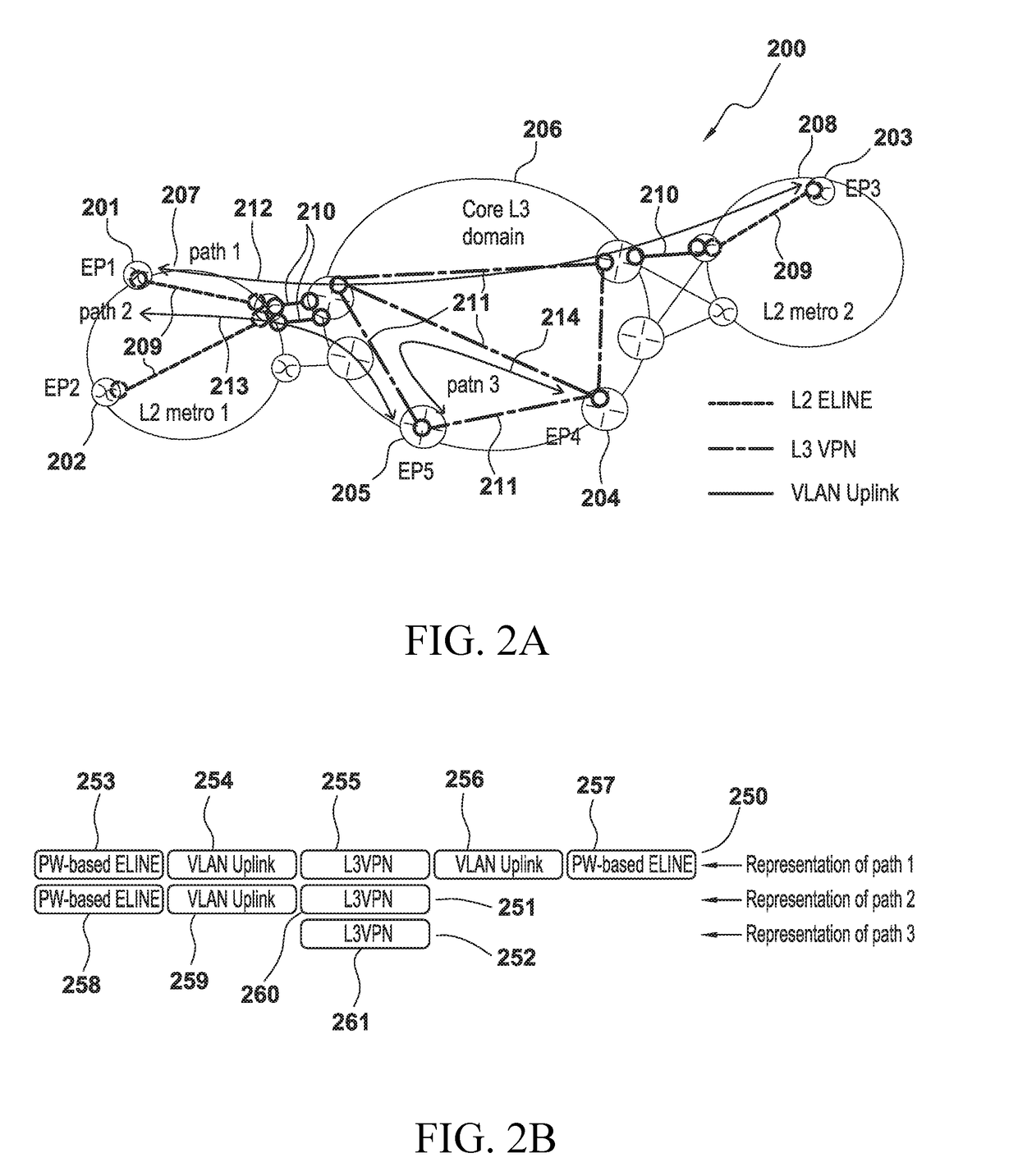Method and apparatus for programmable and flexible multi-domain l2/l3 ip/mpls VPN service provisioning using a dynamic service model
a dynamic service model and multi-domain technology, applied in the direction of data switching by path configuration, digital transmission, data switching network, etc., can solve the problems of inefficient steering traffic, no existing automated solutions, and complex bgp configuration of automated solutions
- Summary
- Abstract
- Description
- Claims
- Application Information
AI Technical Summary
Benefits of technology
Problems solved by technology
Method used
Image
Examples
first embodiment
[0073]The first embodiment is a service-realm DSM solution, where the network operator defines the service domains (i.e. service realms) explicitly in DSM policy using the capability flags (i.e. service flags and inter-networking flags). The DSM policy may then be used during the service provisioning.
second embodiment
[0074]The second embodiment is an implicit-service DSM solution, where the network operator defines capability flags (i.e. service flags and inter-networking flags). The service realms will be indirectly inferred.
[0075]In a first embodiment, FIG. 1 illustrates the first solution with the service realm DSM topology 100. The DSM policy defines the E2E multi-domain service topology.
[0076]A service realm is a group of network elements which supports the same service types. The multi-domain E2E service includes multiple endpoints, EP1-EP5 (101, 102, 103, 104 and 105), multiple service realms including for example the PW-based E-Line & EVPN-based E-Line 106, VLAN Uplink 107, L3 VPN over RSVP 108, PW-based E-Line 109, and network elements 110 within those service realms which support the same set of services.
[0077]For example, FIG. 1 illustrates four service realms, PW-based E-Line & EVPN-based E-Line, VLAN Uplink, L3 VPN over RSVP, and PW-based E-Line.
[0078]Each service realm includes the...
PUM
 Login to View More
Login to View More Abstract
Description
Claims
Application Information
 Login to View More
Login to View More - R&D
- Intellectual Property
- Life Sciences
- Materials
- Tech Scout
- Unparalleled Data Quality
- Higher Quality Content
- 60% Fewer Hallucinations
Browse by: Latest US Patents, China's latest patents, Technical Efficacy Thesaurus, Application Domain, Technology Topic, Popular Technical Reports.
© 2025 PatSnap. All rights reserved.Legal|Privacy policy|Modern Slavery Act Transparency Statement|Sitemap|About US| Contact US: help@patsnap.com



